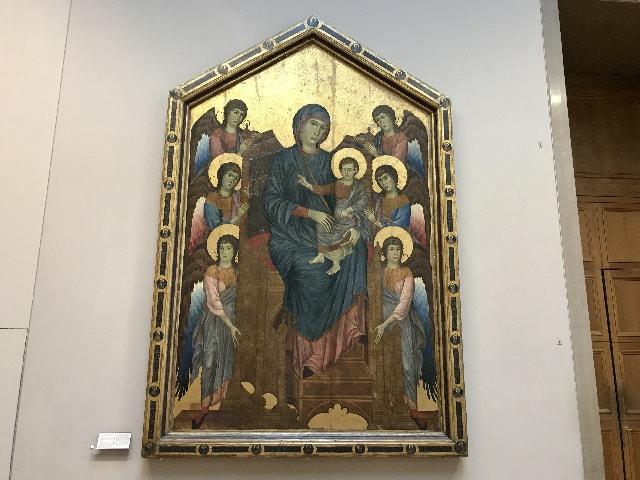Louvre
Don't miss anything
Madonna and Child in Majesty Surrounded by Angels
1270 Century by Cimabue.
The works of art in this gallery mark the end of the Byzantine period and the beginning of the Italian Renaissance. In the thirteenth century, Italy was engaged in painting and, at the end of the century, an artist named Giotto invented a new way of painting people and nature. He painted expressive faces and landscapes that seemed more natural and changed the way people painted forever.
Cimabue was Giotto's teacher. We can still see the influence of Byzantine art on his huge painting panel, which is more than 4 meters high and where the artist represents two columns of angels on each side of a monumental Virgin Mary. It has the traditional gold background that is typical of Byzantine art. However, these elements are accompanied by a smoother execution, looking for a new approach to light and shade or chromatic effects.
Despite the flat aspect of the angels surrounding Mary, a new treatment of space is exemplified through the throne on which Mary is seated. The artist expresses a desire to build space in perspective. This was totally innovative in 1280.
The room you are now it is dedicated to Italian painting, but if you look over your head, you will see a magnificent ceiling adorned with the names of the leading European artists, from Van Dyck and Da Vinci to Poussin and Lebrun. They take your respective photo!
Walking from this early Renaissance painting to the fourteenth and fifteenth centuries, you will see how artists refine the treatment of space and invent new painting techniques, introducing a desire to capture human emotions and natural postures.




